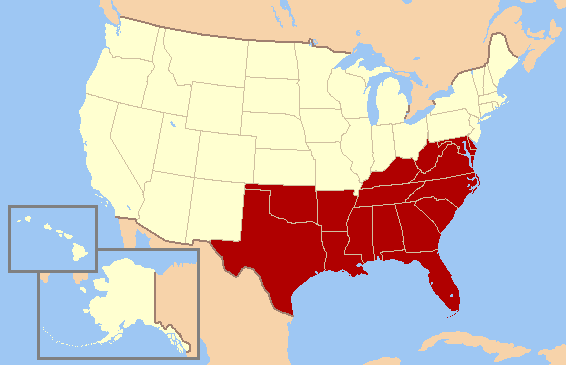The South Conference For Human Welfare (SCHW), and the Southern Conference Education Fund (SCEF) which evolved out of it, were part of a broad movement to promote New Deal policies, civil rights, and economic and political reform in the South. Twelve hundred people, about 25% of whom were African American, attended the first SCHW conference in Birmingham, Alabama on November 20, 1938. Among the attendees were Supreme Court Justice Hugo Black, Works Progress Administrator Aubrey Willis Williams, Alabama governor Bibb Graves, civil rights activist Mary McLeod Bethune, and First Lady Eleanor Roosevelt. Attendees also included business leaders, labor organizers, sharecroppers, and newspaper editors. Two of the conference organizers were Joseph Gelders, a member of the Communist Party, and Lucy Randolph Mason, public relations representative for the Congress of Industrial Organizations (CIO). The interracial nature of the organization and the participation of Communists meant that it would be opposed by many liberal and conservative organizations and thus it quickly lost the support of most Southern politicians.
The group’s primary focus on labor and civil rights reform in the South probably would have cost it support anyway. Addressing the repression of union organizing in the region especially among agricultural workers, most of whom were Black, meant their reform campaign would be difficult. The SCHW understood the issues of racism and segregation that affected Blacks negatively also impacted whites throughout the region as well.
The SCHW found it difficult to raise funds and pay its staff during World War II. As a result, Hollywood celebrities such as Orson Welles and Frank Sinatra, helped raise money for an offshoot of the SCHW, the Southern Conference Educational Fund (SCEF) which was founded in 1942 as the educational and non-political subsidiary of the larger organization. Eventually SCEF would be led by James Dombrowski, head of the Highlander Folk School in Monteagle, Tennessee.
As the SCHW in the late 1940s refused to expel its Communist members, it lost more supporters including the AFL and CIO and eventually Former First Lady Eleanor Roosevelt. SCHW members also differed over whether to support Progressive Party Presidential candidate Henry Wallace or President Harry Truman in the 1948 presidential election. On November 20, 1948, exactly ten years after its founding, SCHW leaders met at Monticello, Virginia to reorganize themselves exclusively as the Southern Conference Educational Fund (SCEF) which committed itself to ending school segregation in the South.
SCEF leader James Dombrowski created the organization’s newspaper, the Southern Patriot, which described the negative impact of school segregation on communities across the region. By 1955, the husband and wife team of Carl and Anne Braden of Louisville, Kentucky who had joined the SCEF as field organizers, now led the organization which now also faced redbaiting. In 1958 the group was investigated by the House UnAmerican Activities Committee of the US House of Representatives. Their appearance there and the subsequent charge of perjury, let to Carl Braden spending ten months in jail. Yet the SCEF continued, helped by the support of former First Lady Eleanor Roosevelt and by members of the emerging civil rights movement such as Ella Baker, Rev. Martin Luther King and Coretta Scott King, and Rev. Fred Shuttlesworth. Eventually the SCEF lost many of its activists and supporters who newer Black-led organizations such as the Southern Christian Leadership Conference (SCLC) and the Student Non-Violent Coordinating Committee (SNCC). The SCEF finally disbanded in 1981.

